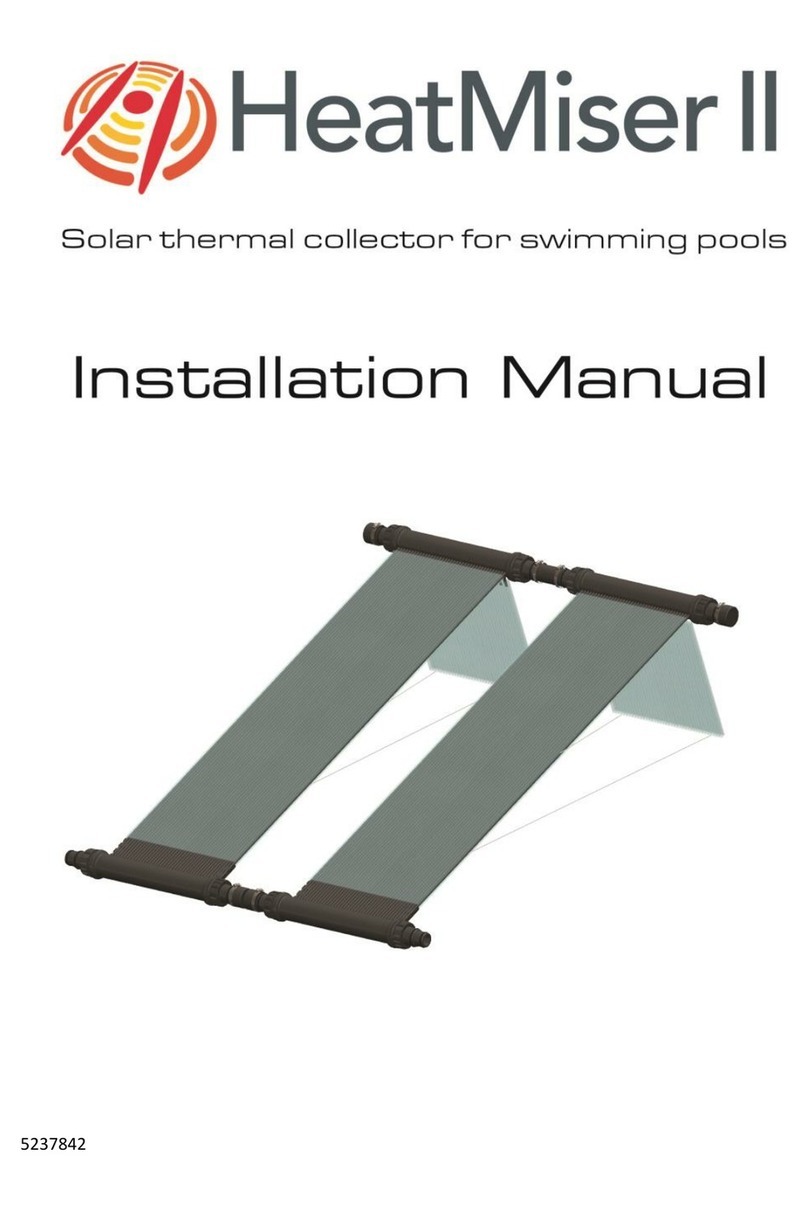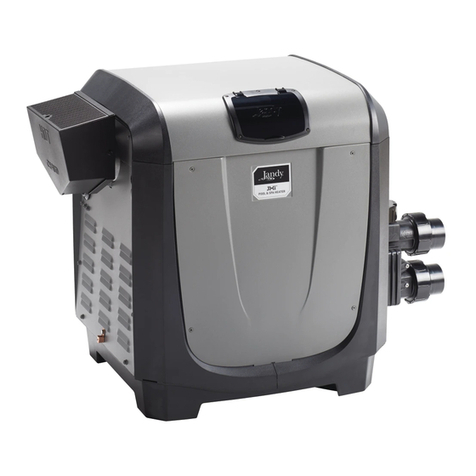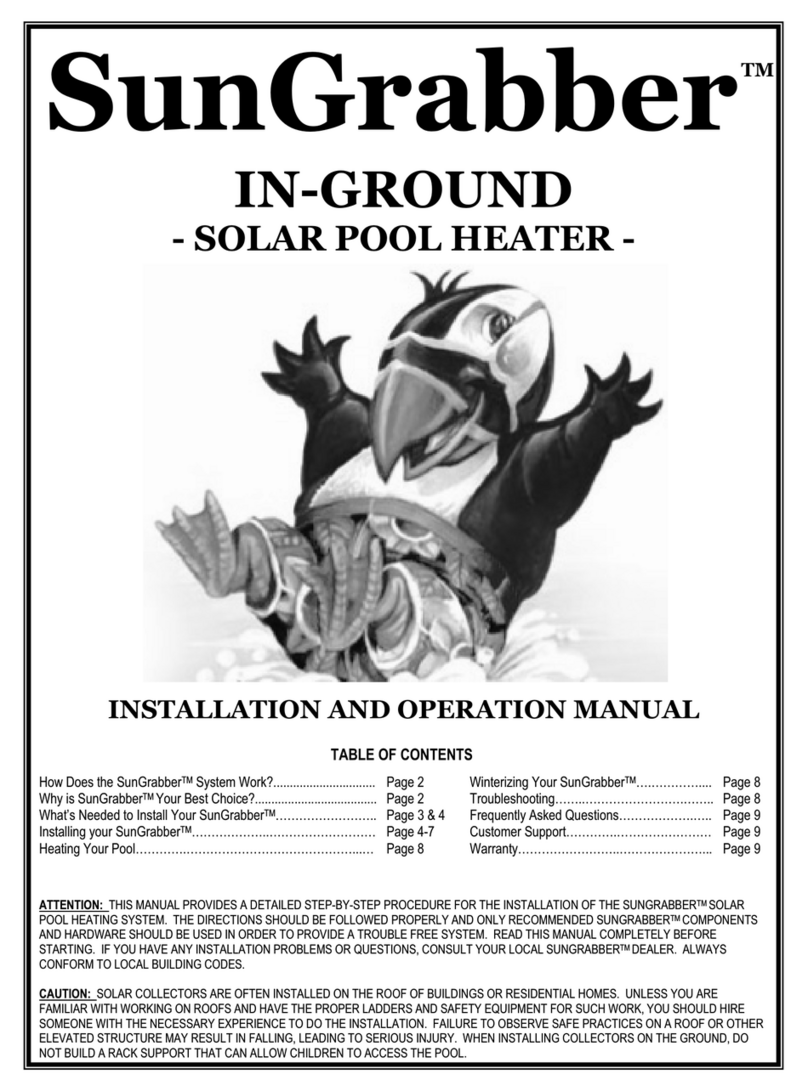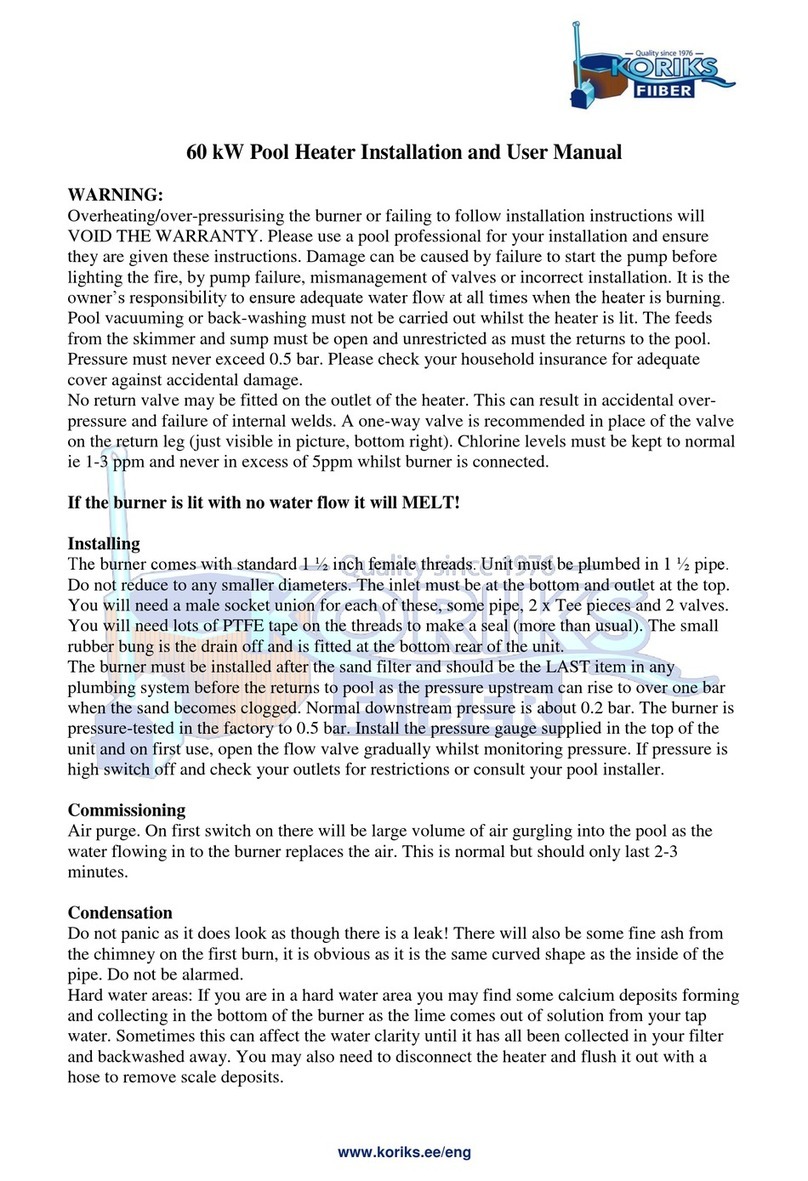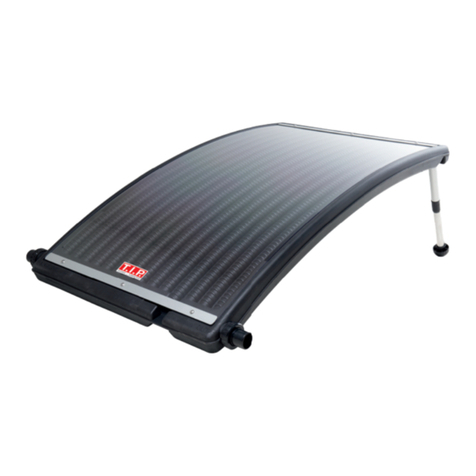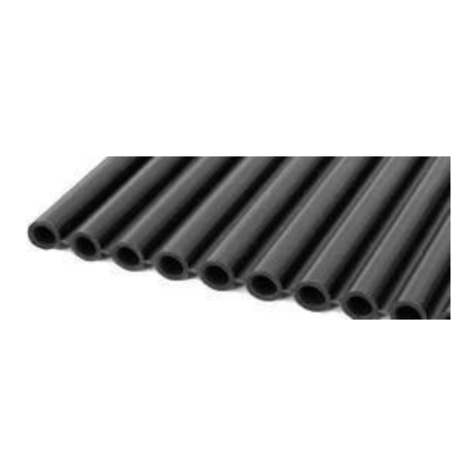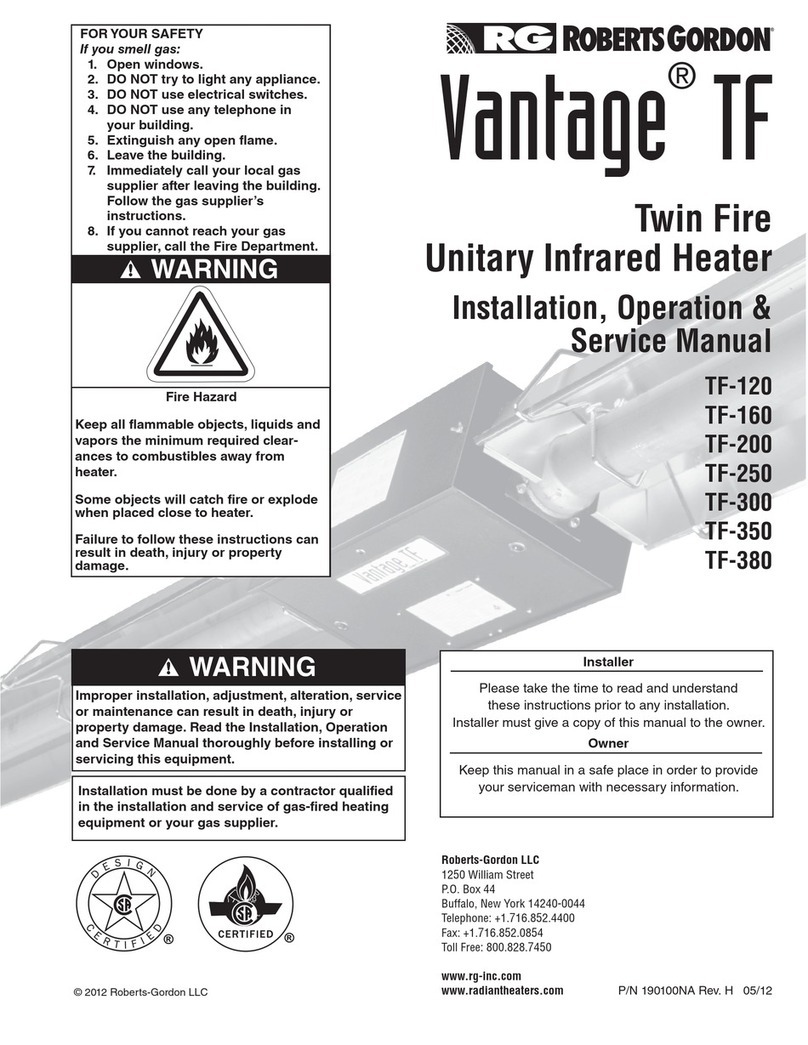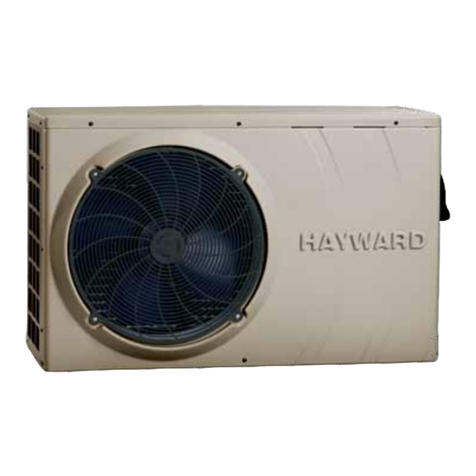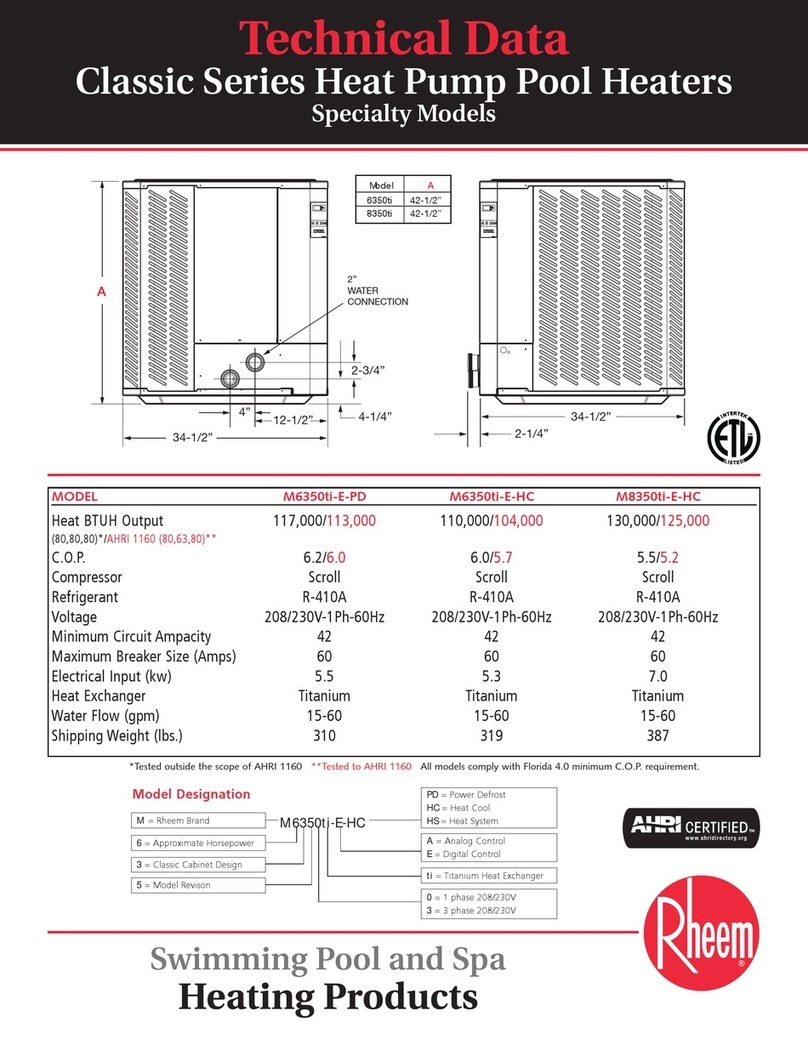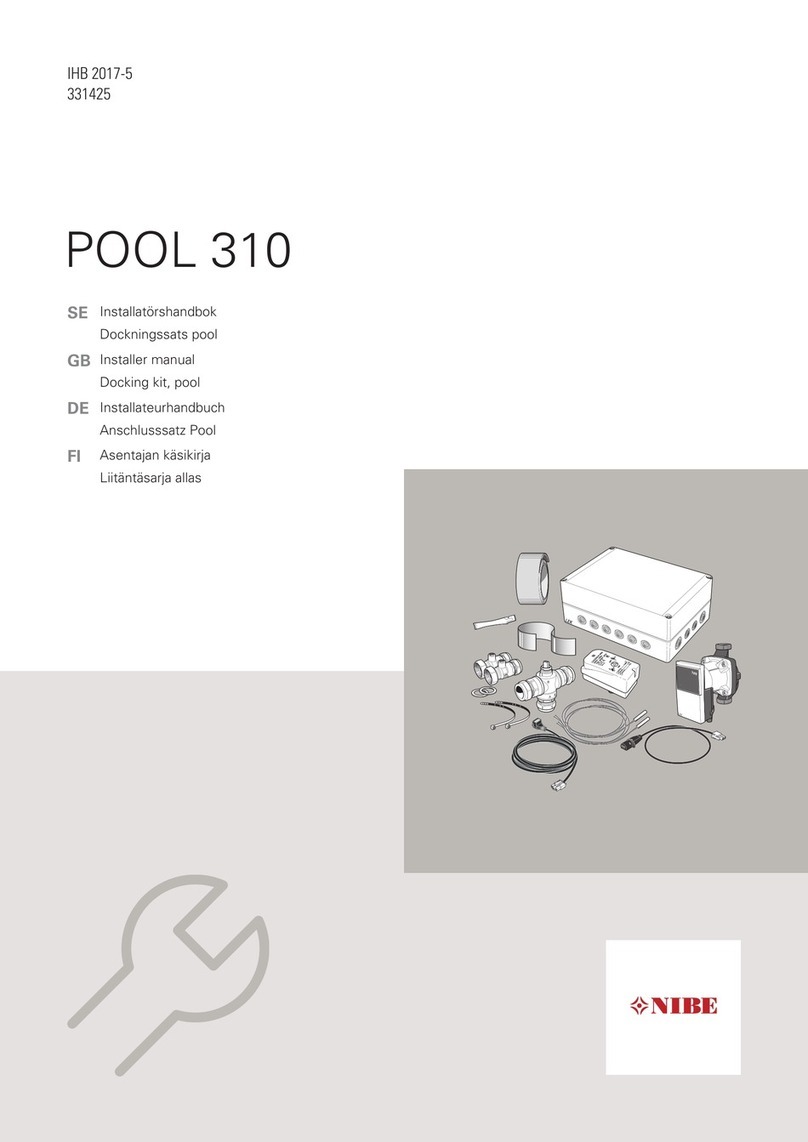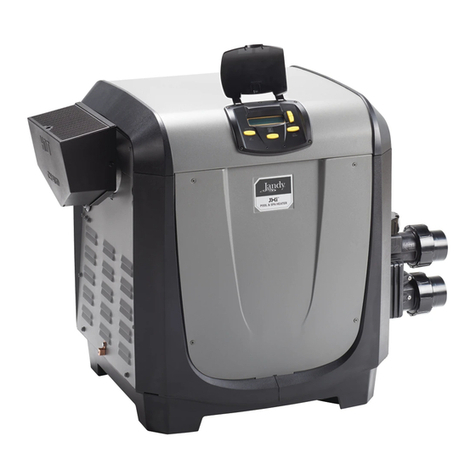
RACCORDEMENTS HYDRAULIQUES
Raccorder :
•le primaire en A et B directement sur les vannes
d’isolement depuis une bouteille casse-pression.
Raccords femelles en
1’’ -
26/34,
•le secondaire en C et D directement sur les 2 raccords-
unions PVC en dérivation sur le circuit de filtration.
Raccords-unions femelles
40 mm à coller pour
tuyauterie PVC
40 mm extérieur,
Installer 2 vannes d’isolement et une vanne de vidange coté
circuit piscine à l’entrée et à la sortie du module AquaPool
pour permettre de l’isoler hydrauliquement pendant les
opérations de nettoyage des plaques dans le cadre de la
maintenance.
RACCORDEMENTS ELECTRIQUES
•Alimentation électrique : 230V / 1 Ph / 50 Hz + Terre,
•Puissance électrique absorbée maxi. : 90 W,
•Courant maxi. absorbé en fonctionnement : 0,4 A,
Le raccordement électrique de nos appareils doit être effectué
en conformité avec les normes en vigueur et les règles de l’art.
L’alimentation électrique se fera depuis une protection de tête
de ligne par fusibles ou disjoncteurs d’un calibre suffisant par
des câbles électriques de section appropriée. Nos appareils
doivent impérativement être mis à la Terre.
•S’assurer que les caractéristiques de votre installation
électrique soient conformes aux indications suivantes :
Tension 230 V +/- 10% et Fréquence 50 Hz +/- 5%,
MISE EN SERVICE
Les circuits hydrauliques cotés primaire et piscine sont nettoyés et
rincés, remplis d’eau et correctement purgés. Les filtres dont ils
sont équipés sont propres.
L’alimentation électrique est réalisée en conformité avec les
recommandations du chapitre ‘’raccordements électriques’’ ci-
dessus et sa tension et sa fréquence sont correctes. L’appareil est
raccordé à la Terre.
La pompe du circuit de filtration et l’installation de chauffage coté
primaire sont en service. Le primaire du TSP 100 est raccordé sur
une bouteille casse-pression La température d’eau requise au
primaire est correcte.
Appareil hors tension :
•Vérifier que le débit d’eau coté piscine soit correct en
réglant la vanne de by-pass du circuit de filtration de la
piscine. Contrôler la perte de charge de l’échangeur.
Valeurs dans le tableau de performances ci-après.
•Vérifier que le débit d’eau coté primaire soit correct. La
perte de charge dans les canalisations primaire ne doit
pas excéder la valeur de la hauteur manométrique
disponible au niveau de la pompe.
Valeurs dans le tableau de performances ci-après.
•Vérifier que le disjoncteur D1 dans le coffret électrique du
module AquaPool soit enclenché.
•Brancher les asservissements extérieurs ou la commande
de mise en service à distance (contacts secs libres de
potentiels) entre les bornes 1 et 2 dans le coffret. Si aucun
asservissement ou commande à distance ne sont utilisés,
shunter ces bornes.
Mettre l’appareil sous tension :
•Placer le commutateur Marche/Arrêt en façade du coffret
électrique sur la position marche. Le voyant sous-tension
et l’afficheur du thermostat s’allument.
•Régler la consigne et l’hystérésis du thermostat aux
valeurs souhaitées.
Voir procédure de réglage du thermostat ci-après.
•Le module AquaPool est alors en fonctionnement et la
pompe primaire se met en service en fonction de la
demande.
HYDRAULIC CONNECTIONS
Pipe :
•the primary in A and B directly on the isolation valves
from the circuit separation bottle.
Female connections
1’’ -
26/34,
•the secondary in C and D directly on the 3 piece PVC
connectors in parallel of the filtration circuit,
Female 3 piece connectors
40 mm for glued assembly
of 40 mm outer diameter PVC pipes,
Install 2 isolation valves and a drain cock at the swimming
pool side into the inlet and outlet connections of the
AquaPool.
They enable isolation of the module when cleaning the
plates on a regular maintenance schedule.
ELECTRICAL CONNECTIONS
•Power supply required : 230V / 1 Ph / 50 Hz + Earth,
•Max. power input : 90 W,
•Max. current drawn in operation : 0,4 Amps,
Our appliances should be wired according to the current
electrical standards and state of art rules. The electrical supply
should be made from a properly calibrated head of line
protection using fuses or circuit breakers and cables of an
appropriate section should be used.
Our appliances should be properly earthed.
•Make sure the characteristics of your electrical
installation meet the requirement below :
Voltage 230 V +/- 10% and Frequency 50 Hz +/- 5%,
START-UP
The primary and swimming pool hydraulic circuits should be clean
and rinsed, filled-up with clean water and properly purged. The
strainers they are fitted with should be clean.
The power supply should be made in conformity with the
recommendations of the chapter ‘’electrical connections’’ above.
The voltage and the frequency should be correct. The appliance
should be properly eathed.
The filtration circuit pump and the primary heating system should
be running. The primary of the TSP 100 should be piped to a
circuit separation bottle. The required primary water temperature
should be achieved.
Power off :
•Check the swimming pool water flow rate is correct. Set
the bypass valve into the filtration circuit. Check the
pressure drop across the exchanger.
Values are given in the performance chart hereafter.
•Check the primary water flow rate is correct.
The pressure loss in the primary pipework should not
exceed the value of the available head level with the
circulation pump.
Values are given in the performance chart hereafter.
•Check the mini circuit breaker D1 in the AquaPool
electrical panel is switched on.
•Wire the external interlocks or the remote start/stop
switch (volt free contacts) between the terminals 1 and 2
in the electrical panel of the TSP 100.
Should no interlock or remote start/stop switch be used,
the terminals should be properly shunt.
Switch power on :
•Put the start/stop switch mounted on the panel door on
the ON position. The power on light and the display of
the thermostat should lit.
•Adjust the set point of the thermostat to the required
values.
Refer to the thermostat calibration procedure hereafter.
•The AquaPool is then running and the primary pump
should be cycled on and off according to the demand.

